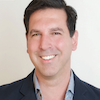

As world markets contend with supply chain issues stemming from climate change, the coronavirus pandemic and Russia’s invasion of Ukraine, environmental, social and governance considerations are slowly taking a more prominent role in pension funds’ risk assessments.
In particular, Canadian pension funds are taking a progressive approach to ESG investing. Many have become signatories of the United Nations’ principles for responsible investment initiative, while many of the largest plans have also pledged to reach net-zero carbon emissions in their respective portfolios by 2050.
Read: Pension plans focusing on streamlining ESG strategies in 2021
So how do plan members view the fiduciary responsibilities of the pension funds that invest their savings dollars when it comes to ESG? Benefits Canada spoke to six employees to find out whether they believe pension funds are meeting their fiduciary duties in adopting these strategies.

One year after Paige Olmsted joined the think tank Smart Prosperity Institute, she became eligible to enrol in the organization’s pension plan — the University of Ottawa Pension Plan.
As an environmental scientist, she’s particularly interested in climate-related issues and how investors are approaching divestment. She’s encouraged by how Canadian institutional investors are stepping up when it comes to alignment in this area and believes their commitments to net-zero emissions will lead to operational changes and spur other entities to make similar pledges.
“Pension funds . . . have a tremendous amount of power. The top eight Canadian pensions manage $2 trillion — [a number] that’s larger than Canada’s [gross domestic product]. . . . They [can] . . . motivate change.”
By the numbers
In a December 2022 survey, the Ontario Pension Board asked its plan members for their perspectives on ESG investing. It found:
• 73% of respondents believed ESG should be an important consideration for the OPB, while 23% of this group said it should be a primary focus;
• 40% were most likely to feel strongly that the OPB should avoid making investments in thermal coal, followed by gambling (34%), fossil fuel extraction or refining (32%), palm oil (28%) and factory farming (26%);
• 84% said they want to stay informed about how the OPB is invested and its approach to ESG; and
• 42% are interested in a dedicated ESG report or section on the OPB’s website.
At age 39, Olmsted recognizes she still has time to build up adequate retirement savings, so she’s less concerned with the potential effects an aggressive ESG investment strategy may have on her retirement portfolio. However, she also doesn’t believe pension funds have to take an all-or-nothing approach to achieving their net-zero goals. Rather, she believes active ownership — encouraging their investee companies to reduce their emissions — can lead to broader change. “Once you divest, you no longer have any say in what the company is doing. Active ownership is often a more prudent first step because it allows pension funds to [advocate for] their beneficiaries . . . or shareholders. It’s another way to get corporations they’re investing in to think differently.”
Read: PSP Investments focusing on climate change in updated proxy voting guidelines
Although many pension funds have started to tie equity targets to their proxy voting processes, Olmsted says these measures are often watered down in order to get the majority vote. “There are other mechanisms for active engagement for large asset holders to use to apply pressure. It’s certainly a tool, but I hope it’s not the only tool [pension funds] use.”
She’d also like to see clear reporting on how portfolio choices have changed. While she knows her pension plan is aligned with the PRI initiative, she’d like to know what that means and how it changes the holdings. In short, she’d like to see more transparency and believes members must demand this of their pension plan sponsors.

Working at the Shareholder Association for Research and Education, Mike Toulch is a member of the Colleges of Applied Arts and Technology’s DBplus pension plan.
One of his top concerns is how plan sponsors are working to address the changes required to deal with both climate change and social inequities. While Toulch doesn’t believe asset managers should be held to any one specific approach, he’d like to hear more on how they’re integrating ESG into their core long-term strategies and philosophies. He believes the current quarterly and annual reporting on pension plans’ investments doesn’t go far enough into the details.
“It’s unfortunate that there isn’t more engagement and dialogue happening between pension plan beneficiaries and their . . . asset [managers] because . . . plan participants will be impacted by the financial outcomes [over] time. The more open and transparent and . . . democratic the decision-making, . . . the less likely [plan members] will be dissatisfied with the performance [of the fund].”
While Toulch acknowledges that pension plan sponsors have a responsibility to meet their fiduciary obligations to their beneficiaries, he notes there’s risk in not changing course when circumstances call for it. “I do think there is a tendency [for pension funds] . . . to . . . hide behind risk aversion with respect to responsible investing.”
Read: AIMCo revealing details of ESG integration process: report
The current global economic system is very complex, but the required direction is pretty straightforward, he says. “I don’t think it’s a discharge of your duty to say you’ve done enough because, given the scale and systemic nature of the crisis we’re currently facing, that’s insufficient.”
Since Toulch became a father last year, it’s only reinforced the urgency to combat climate change and prioritize social equity, he says, noting it’s important to consider future generations’ quality of life. He hopes the measures that institutional investors use to push for social justice are the first of many steps towards changing structures and systems that have historically tilted the scales.

Andy Brake, who’s enrolled in the Healthcare of Ontario Pension Plan through his employer, Sarnia, Ont.’s Bluewater Health hospital, hopes to retire in 10 years.
Like many Canadians, he’s feeling the impact of rising inflation and the cost of living, but he’s still resolute in saving for retirement. However, he doesn’t want his retirement security to come at the expense of the environment. Sustainable investing is a big focus for him and he appreciates the steps the HOOPP has taken to reduce its investment portfolio’s carbon footprint.
In particular, Brake would like to see his pension contributions go to companies whose business practices are benefitting communities. “It’s important that pension plans are investing in a way that matches [members’] personal values.”
Although he wants to see more divestment in areas such as munitions and tobacco companies, he acknowledges it will take time to phase out the fossil fuel industry. Brake’s hometown in Sarnia houses a number of oil refineries and he recognizes the industry is still a vital part of the world economy. Labelling fossil fuel companies as “bad” is unproductive, he says, noting a balanced approach — rather than complete divestment — is necessary for pension fund sustainability.
“Many fossil fuel companies are starting to do their own transitions because they see this is where the world is going. The fact that most [pension plan sponsors] are making a real target of 2050 [for reaching] net-zero emissions proves they are showing that they’re planning ahead. It’s encouraging to see them taking steps to align with global goals, such as the Paris Agreement.”
Read: UTAM committing to fully divesting from fossil fuels by 2030
Brake views environmental justice and social justice as intertwined. As a father to two daughters, he considers social justice a priority and would like to see more plan sponsors factoring board diversity, including gender equity targets, into their proxy voting processes. “There are so many barriers for minorities — and women, in particular — in business. It’s important to me, that [my daughters] are coming into a world that is finally starting to see some of those barriers for women come down.”

In 2019, Chantal Hartwell transitioned to a full-time teaching role as a kindergarten teacher with the Halton District School Board, through which she’s a member of the Ontario Teachers’ Pension Plan.
As a nature lover, she’s heartened that ESG investing has been a priority for the pension fund’s board over the last few years. The measures implemented by the Ontario Teachers’ — including pledging to reach net-zero emissions by 2050 (compared to 2019 levels), launching a green bond fund and signing onto the PRI initiative — will help move the needle in the push towards undoing the climate change crisis, she says.
At age 41, Hartwell is acutely aware of the importance of saving for her retirement future, particularly since she’s a single-income earner. “It’s a hard time to be on a single income. While I don’t have children, I still need to provide a roof over my head and deal with the cost of living on my own.”
While she trusts that pension funds’ key decision-makers have both the environment and plan members’ best interests in mind when devising their investment strategies, she also hopes these decision-makers are listening to the experts in the ESG field when it comes to the move to a carbon neutral future.
Hartwell would also like to see pension funds do more on the communications front to make members aware of the measures they’re taking when it comes to responsible investing.
Read: Ontario Teachers’ focusing on DEI as key part of long-term vision
As a plan member, she’s thrilled the Ontario Teachers’ is factoring diversity and gender equity into its proxy voting system. “It’s encouraging to see such progressive measures being put into place to drive much-needed change,” she adds, noting it’s up to organizations to take these types of steps so society advances reach adequate representation of women on boards, for instance.

As a professor and associate chair of research in the Department of Psychiatry and Behavioural Neurosciences at McMaster University, Margaret McKinnon is contributing to the university’s defined benefit plan. She also has savings in the HOOPP from her previous role at St. Joseph’s Healthcare Hamilton.
Key takeaways
• Pension plan members believe ESG is an existential risk, so it should be factored into asset managers’ investment strategies.
• They believe institutional investors should take a balanced approach to divestment to ensure the longevity and sustainability of pension funds.
• More communication is required about how pension plans are approaching responsible investing so plan members understand whether these strategies align with their values.
DEI is tremendously important, she says, including the representation of women — and particularly those in the Black, Indigenous and people of colour community. “Representation of BIPOC people and the number of women on boards tends to be very low, despite that there are a lot of studies that show when companies increase diversity in their upper ranks, they bring in more profits.”
McKinnon believes it’s critical for pension funds to use all of the tools in their toolbox to set a standard for change when it comes to equity and social justice issues. While she’s impressed with the steps that institutional investors are taking when it comes to responsible investing, she’d like to see more transparency around where plan members’ savings are being directed.
She’d also like to see pension funds divest from areas such as fossil fuels and conflict diamonds. However, she acknowledges that transitioning out of some industries will take more time.
McKinnon, who’s in her late 40s, isn’t in a rush to retire. Nor is she concerned about potentially sacrificing some of her retirement savings for an ethically focused investment strategy. “I’d rather have 90 cents on $1 if I knew it was being done ethically or that the benefits were going to investments for people and communities.”

As a professor in the graphic design department at Conestoga College, John Baljkas is a member of the CAAT’s DBplus plan.
He trusts that asset managers’ decisions are in the best interest of both plan members and the greater society. “I assumed that ESG investing would be considered a best practice and I was happy to find out that it is at CAAT.”
Since Baljkas trusts the experts, he doesn’t regularly analyze the statements he receives from the CAAT. “Maybe [it’s] a naive perspective, but my assumption would be there’s enough transparency in place, so if I wanted to know exactly where the funds are going I can access it. However, I’m assuming the funds are well-managed.”
Read: Institutional investors signed onto PRI outperformed non-signatories over five years: report
Pension plan sponsors’ fiduciary duties extend to factoring risk from climate change, he says, noting institutional investors don’t have to choose between the moral choice and optimizing returns — the two can coexist. While a university student, Baljkas signed up for a registered savings plan that was invested in an ethical fund, which has done quite well today.
He also believes renewable energy is a growth industry that’s highly profitable, which just goes to show that ESG strategies and generating adequate returns go hand in hand.
Lauren Bailey is an associate editor at Benefits Canada.
